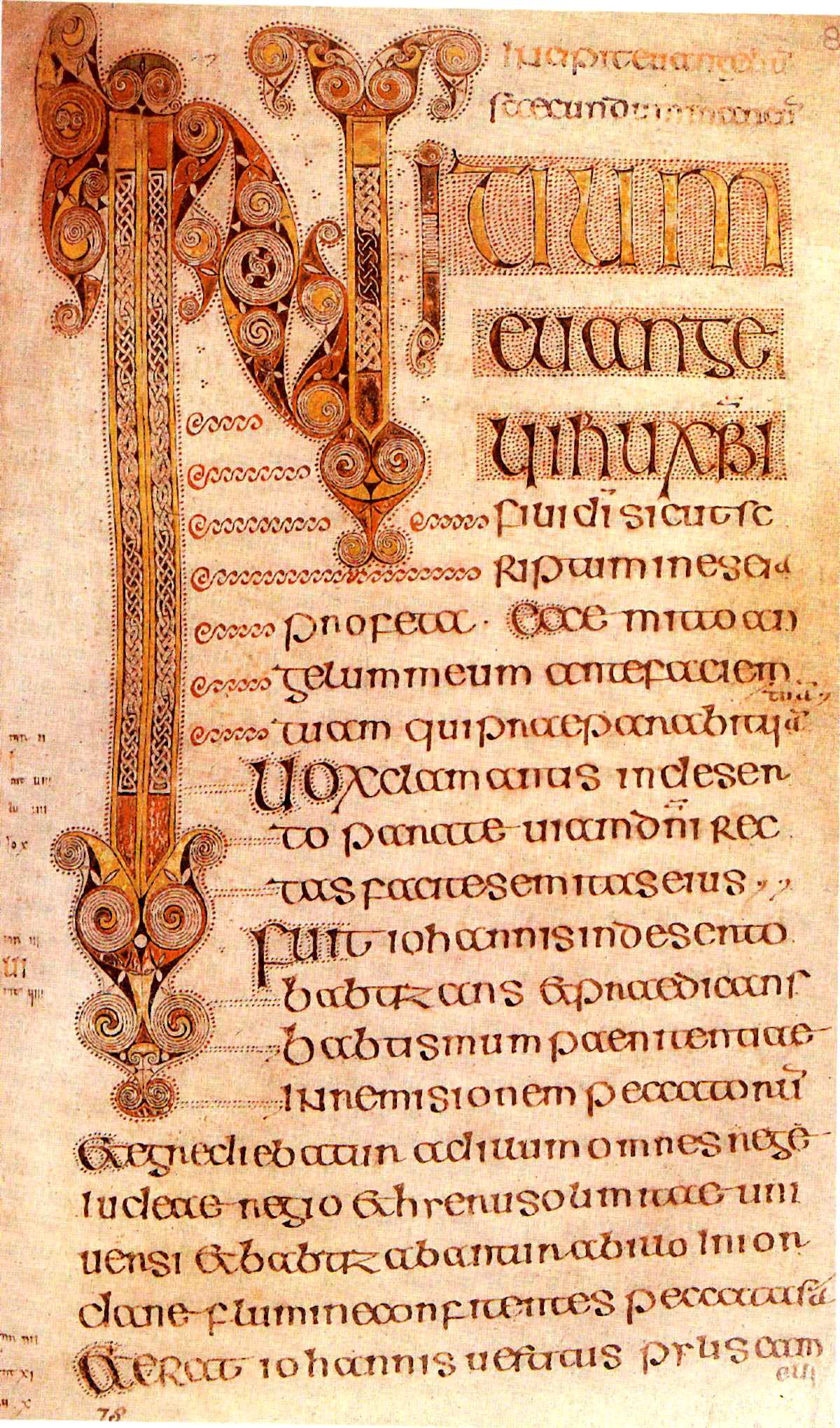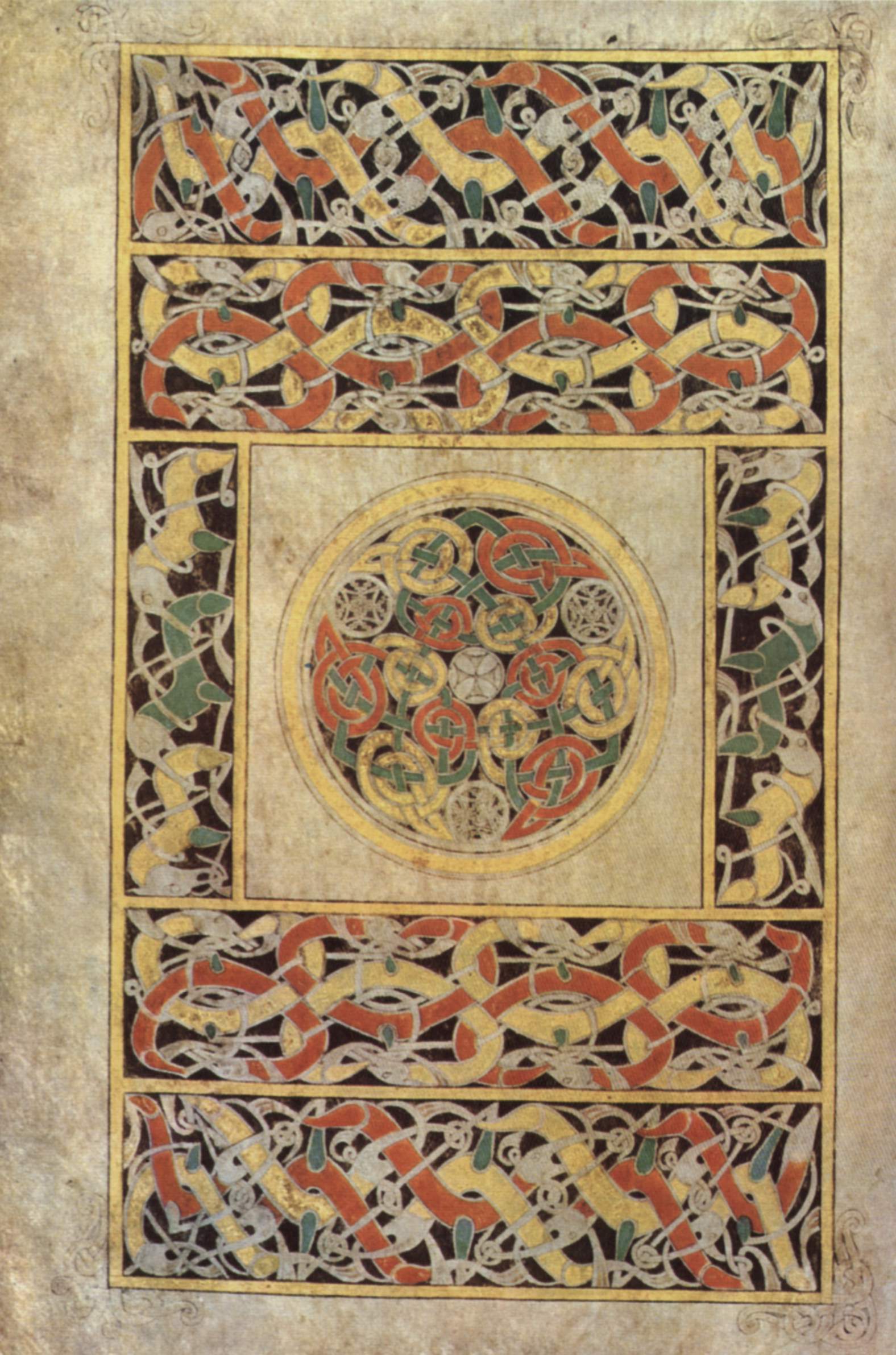Welcome to 31 Days of Medieval Manuscripts, a month-long series introducing the fascinating and brilliant world of medieval illuminated manuscripts.

The Book of Durrow has always been fascinating to me, probably because it was the first medieval manuscript I studied in college. The Book of Durrow is stylistically related to the Book of Kells and the Lindisfarne Gospels, both of which I’ve previously discussed, but the Book of Durrow pre-dates the other two. In fact, it is the earliest-known surviving example of an insular (of the British Isles) Gothic manuscript to be completely decorated (1).

In other words, all of the elaborate interlace, massive initials, and gilt decoration we’ve been admiring in other early illuminated manuscripts are the children and grand-children of the Book of Durrow. In my opinion, the family relationship between the Book of Durrow and the Book of Kells can be seen quite clearly, as can the development of the style from one to the other. Durrow is the first known manuscript to include illustrations of the four Evangelists’ symbols, a feature we have seen survive in various forms for centuries. (2)

Sources: (1) Bernard Meehan, quoted by the University of North Carolina’s page “Dublin, Trinity College MS A.4.5 (57) – Gospel Book (Book of Durrow)”. (2) Robert Calkins, quoted in ibid.

